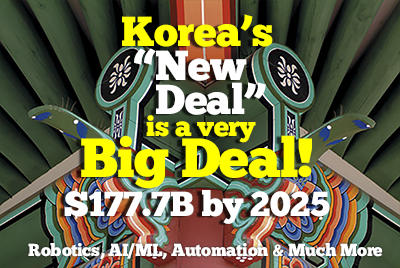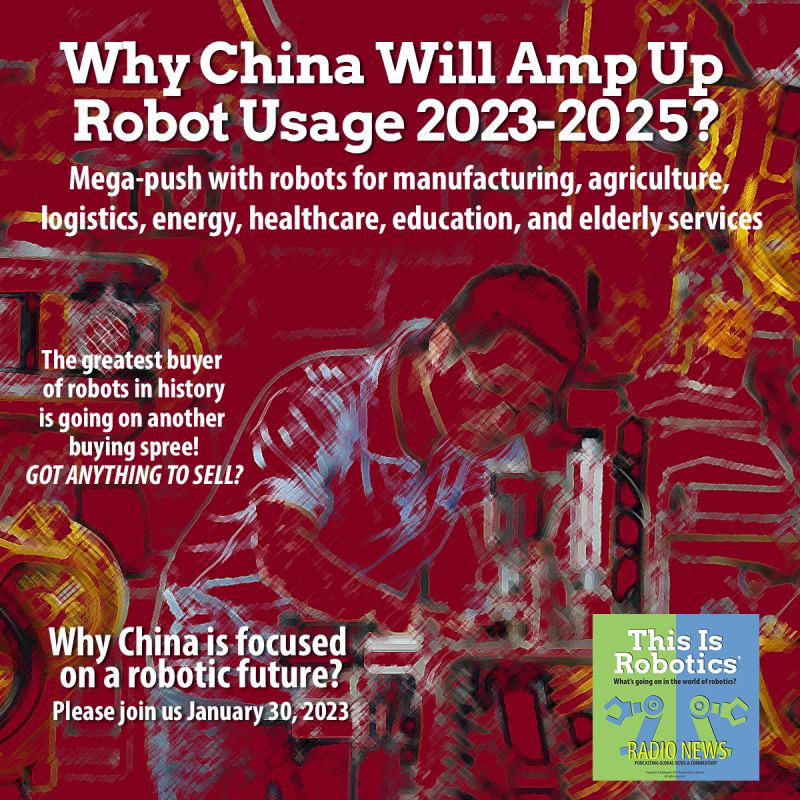
$7.35 billion
Japan’s 2022 Industrial Robot Sales Boomed, But…
After three consecutive years of increases, can Japan sustain the boom? Competition from Korea, China, and yes, AI, looms just ahead
Despite a bit of a drop off from October through December, Japan’s Industrial robot sales were record-breaking in 2022. $7.35 billion! According to Fortune Business Insights, the global industrial robots market in 2022 was $16.8 billion. Therefore, Japan’s share is hefty. And well deserved.
“Strong demand for production line automation due to the global labor shortage and the shift to electric vehicles [EVs] underpinned the growth in orders, capping three consecutive years of increases,” says Nikkei Asian Review.

Additionally, since Japan also makes the lion’s share of robot parts, which are key to an industrial robot’s healthy work life, it also enhances Japanese robotics in maintaining leadership: Robot Gear Works Under the Hood Is All Japanese.
In fact, machine tools, the machines that make machines (robots included), see the world’s best machine tools hailing from Japan and Germany.
In short, the Emperor of All Robots is well-positioned for robot success in all areas of automated manufacturing.
As long as the world needs millions of automobiles (EVs or ICEs) then the world still needs hulking giants from the likes of FANUC to push cars and trucks and SUVs through massive auto plants. Industrial robot production increased by 5.6% in value terms to $6.5 billion in 2022; also a record.
Then too, the decided shift toward adopting automation for packaging and transport has been on the grow in logistics, food and pharmaceuticals, prompting major robot manufacturers to increase production capacity. Japan’s nimble robot makers recognized the changes early on, adapted to the times, and grew again.
Revenue breakdown by geography (as of 2021):
FANUC: Japan 15.0%, China 33.1%, United States 18.8%, Europe 15.5%
Daifuku: Japan 34.6%, China 12.6%, Americas 28.6%, South Korea 9.2%
Kawasaki: Japan 47.3%, Asia 18.6%, United States 21.1%, Europe 9.6%
Yaskawa: Japan 34.9%, China 25.1%, Americas 15.1%, Europe/Middle East/Africa 14.1%
Japan manufactures 45% of the global supply of industrial robots, according to a recent report from the International Federation of Robotics (IFR), making it the top manufacturer of industrial robots in the world.
However, at one time in the not-too-distant past, Japan made 90% of the world’s robots. Something happened called competition that cut Japan’s robot sales nearly in half.
Although Japan’s future in robotics is of the juggernaut variety, there are formidable movements right in its neighborhood of East Asia that are mounting challenges, plus Japan’s surprising weakness in the ongoing convergence of robotics with artificial intelligence (AI) needs to be addressed.
Headlines like Japan races to hire 270,000 artificial intelligence engineers are less than encouraging. Nor is this: Masayoshi Son, Japan’s billionaire founder of SoftBank, has warned that Japanese businesses need to “wake up” and that the country, once famed for its innovation, is falling dangerously behind in applying artificial intelligence.
Japan’s robot competition: Korea & China
Japan doesn’t have to look very far to see direct competitors. China and Korea are ramping up their respective robotics industries.
With an eye toward creating twenty $80-million ($100 billion won) robot companies, Korea’s then-President Moon Jae-in, announced in March of 2019: “The government has set a goal of turning the nation’s robotics industry into the fourth-largest player in the world by 2023.”
More recently, Korea, with the fourth largest economy in Asia—tenth worldwide—announced, in July of 2020, its National Strategy for a Great Transformation: The Korean New Deal. President Moon commented: “The Korean New Deal will set the foundation for Korea’s next 100 years.”
Automation, including the combination of robotics with AI, is a major thrust of the New Deal, and Korea’s putting in $177 billion. As heady as the sheer mass of the amount invested is Korea’s determination to more than just foster artificial intelligence (AI). Korea is hellbent on world leadership or shared leadership in AI.
Interesting to note that Korea is regarded #1 on a list by Analytics Insight as “the top advanced robotics countries in 2022 for its industrial robot usage across the world.”
When it comes to converging robots with AI, AI is now reaching the worldwide obsession stage. Why? The power and potential of this new robot/AI combo is the future of all automation. Korea is looking to grab the lead while AI is still young and expanding.
China took a different route to possessing a topflight global robot maker when Medea acquired 95% of Germany’s KUKA in 2016 for $5 billion (the remaining 5% Medea bought out in 2022 for $165 million). With domestic producers like Siasun and ESTUN Robotics, China has developed a core of excellent robot makers who sell China 39% of its annual deployments (Japan supplies China with 36%).
An AI powerhouse already, China now wants to amp up its robot deployments between 2023-2025, and is putting billions behind the effort. The recently launched plan “Robot + Application Action Plan” seeks not only robot purchases but also robot “applications”. No doubt, applications that include converged robots/AI will top the list.
The world’s largest buyer of industrial robots for nine straight years, averaging 21,000 industrial robots a month, China now wants to favor purchases of domestic robots over foreign (read, Japan), and nurture robot applications that integrate AI. 50% of total robot purchases is China’s goal by 2025.
Japan’s New Robot Strategy, around for a few years already, is beginning to pick up some steam. The government has committed more than $930 million to the effort in 2022, which is actually a sub-billion-dollar pittance when stacked up against Korea and China’s billions.
Although, “the development of integrated technologies will be the core of next-generation artificial intelligence and robots,” says Japan, the money, as well as the effort, seem to be minimal. There was an additional $440 million allocated to “robotics-related projects” in the “Moonshot Research and Development Program” (5 years from 2020 to 2025), which, to date, has produced little.
“In a survey conducted in Japan in March 2022, almost 49 percent of the respondents stated that the artificial intelligence (AI) implemented at their companies was not maximally utilized. It was the most common issue with regard to the operation of AI, followed by a lack of personnel that could operate it and insufficient integration with existing systems.”
The rewards for success in converging robots with AI are very clear, as a recent forecast from Markets & Markets suggests: The AI Robots market is readying for a great leap forward; the market will grow from $6.9 billion in 2021 to $35 billion by 2026.
And then comes the “but”
Japan, today’s Emperor of All Robots, will obviously want to remain the top dog in the industrial robotics biz. To do so, a lot of work needs to be done sooner rather than later, plus a good helping of luck would be welcome, or alternatively, maybe open wide Japan’s treasure chest and acquire the necessary AI technology.
Whatever the tactic, Japan needs to apply it with great haste. For sure, AI will wait for no one, Emperor or not.
ALSO:



